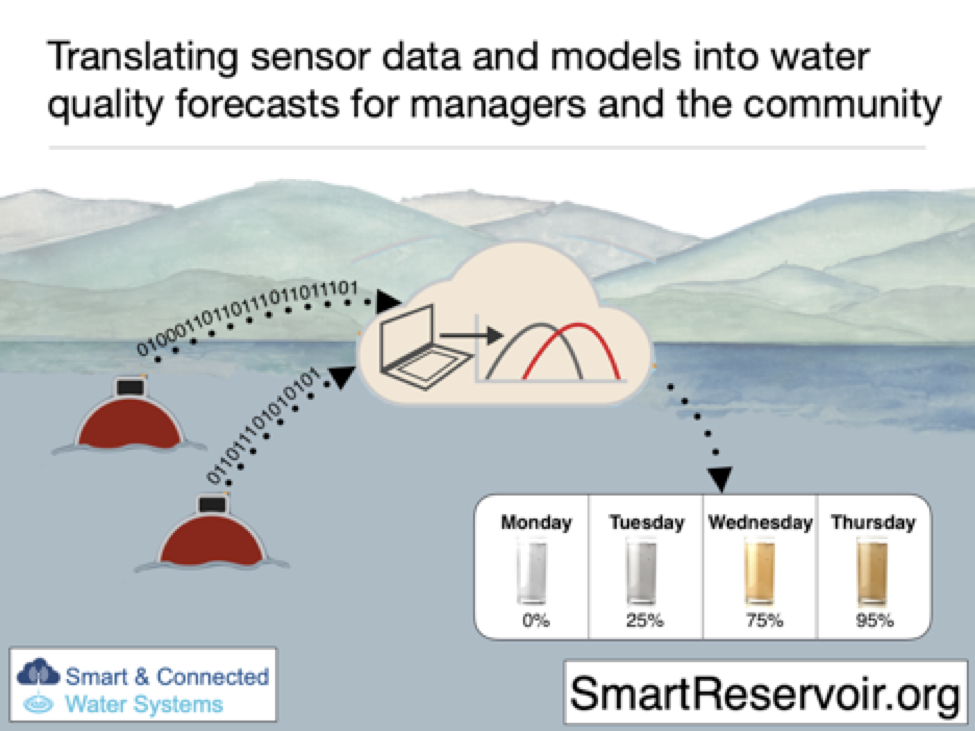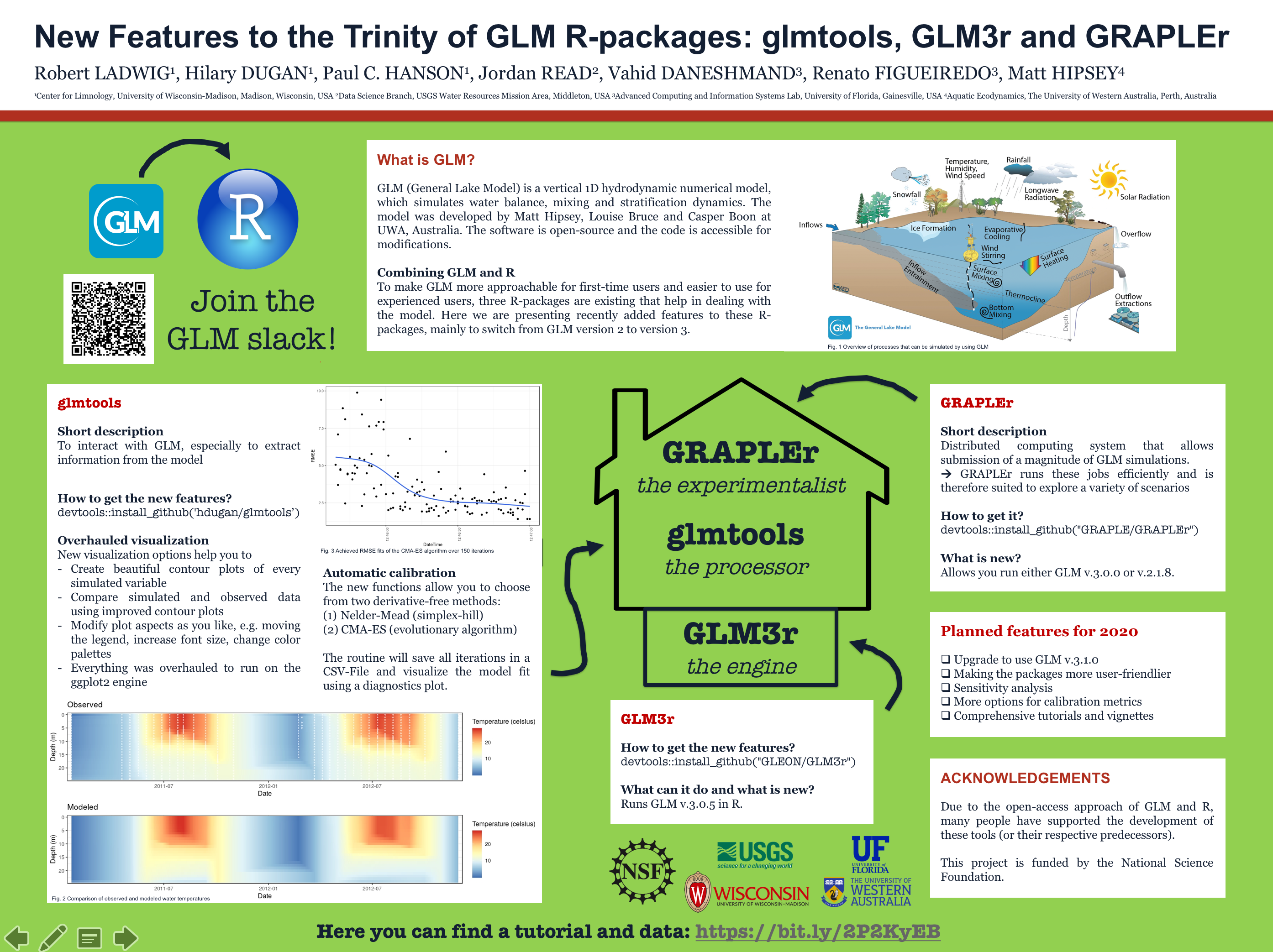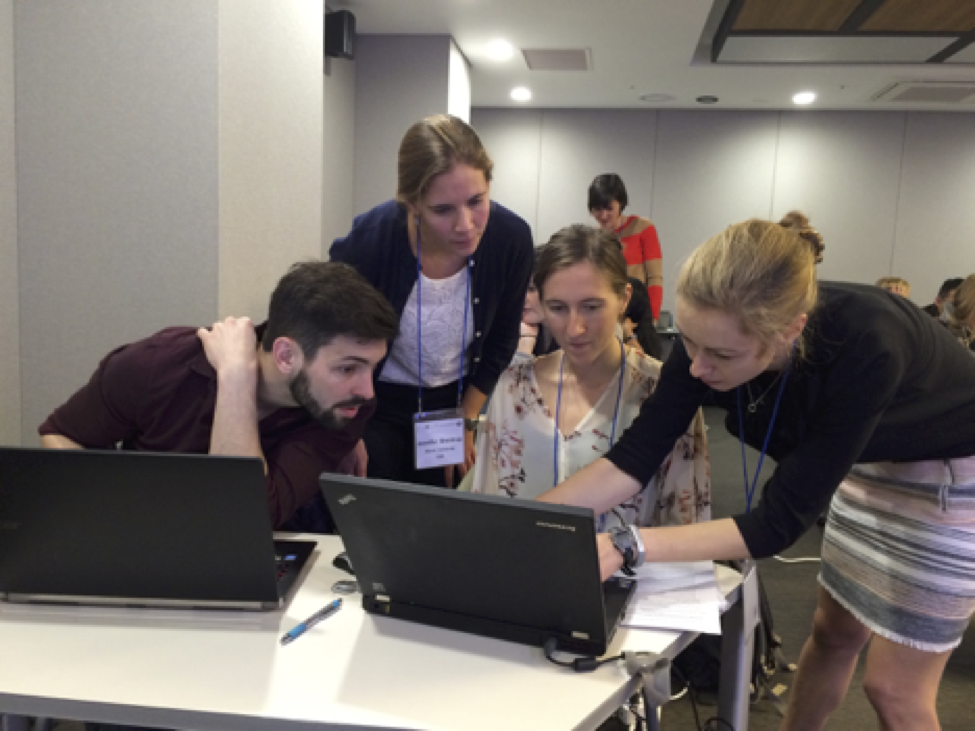Freshwater ecosystems are experiencing greater variability due to human activities, necessitating new tools to anticipate future water quality. In response, we developed and automated a near-term, iterative water quality forecasting system (FLARE – Forecasting Lake And Reservoir Ecosystems) that is generalizable for lakes and reservoirs. FLARE is composed of: water quality and meteorology sensors that wirelessly stream data, a data assimilation algorithm that uses sensor observations to update predictions from the General Lake Model and calibrate model parameters, and an ensemble-based forecasting algorithm to generate forecasts that include uncertainty. Importantly, FLARE quantifies the contribution of different sources of uncertainty (parameters, driver data, initial conditions, and process) to each daily forecast of water temperature at multiple depths. Overall, FLARE provides an open-source and easily-generalizable system for water quality forecasting for lakes and reservoirs to improve management
- see the video summary here!.
(Image credit: Cayelan Carey & Kate Hamre)
Projects & News
To make GLM more approachable for first-time users and easier to use for experienced users, three R-packages are existing that help in dealing with the model. We have recently added features to these R-packages, mainly to switch from GLM version 2 to version 3. - see more on this link.
Freshwaters receive and process a vast amount of carbon (C), which can be emitted as greenhouse gases or buried in their sediments. Freshwater emissions of carbon dioxide and methane may be of comparable magnitude to the terrestrial C sink, while human-made reservoirs may bury more C annually than the ocean. C processing rates in reservoirs are strongly dependent on the oxygen environment near the sediments. However, oxygen dynamics in many waterbodies are changing globally due to land use and climate change, and the consequences of these changes for C cycling and burial are unknown. This interdisciplinary project is using GLM-AED to study how changes in oxygen alter C processing and GHG emissions in aquatic ecosystems, and instantiate this knowledge in open-source ecosystem models to study C burial and GHG emissions in aquatic ecosystems.
Macrosystems EDDIE is an interdisciplinary initiative led by ecologists and educators to develop flexible teaching modules that introduce undergraduate and graduate students to the core concepts of macrosystems ecology and simulation modeling through the lens of limnology. Each module utilizes long-term, high-frequency, and sensor-based datasets from diverse sources, including the Global Lakes Ecological Observatory Network and the National Ecological Observatory Network. Each module can be adapted for use in introductory, intermediate, and advanced courses in ecology, limnology, modeling, and related fields, in order to enhance students' understanding of macrosystems ecology, their computational skills, and their ability to conduct inquiry-based studies. All of the current modules use the open-source GLM-AED as the foundational ecosystem model students work with to examine how lakes are changing in response to human activities. (Photo credit: Grace Hong)
GRAPLEr brings the power of distributing computing to the fingertips of lake ecology modelers. It is a Web Service that allows you to submit batches of GLM (General Lake Model) simulations to a distributed computing system, directly from your R/Rstudio environment. View the code and wiki here: https://github.com/GRAPLE/GRAPLEr/wiki.
(Image credit: Subratie et al. 2017)
Interested in how different types of lake emit CH4? We know CH4 emissions from lakes, wetlands and reservoirs are considerable on the global-scale, but how do different lakes in different climates compare? MELMO is a new collaborative project formed from the GLEON working group aiming to make a generally applicable model - see more on this link. Please get in touch if your interested!
The GLM-MLCP is a community driven initiative where numerous researchers from the GLEON and AEMON networks collectively simulate numerous lakes using a common approach to setup and assessment. More than 20 lakes have been simulated, ranging in latitude from 56oN to 38oS, in elevation from -210 to +560m above sea level, from trophic status of oligotrophic to eutrophic, depth from 12 to 253m, volume from 6.9e5 to 4.8e10 m3, mixing regimes from polymictic to meremictic and from a range of climates including warm lakes with lakes with seasonal ice cover. For each lake, standard sets of both forcing (input) data and calibration (field) data were collated.





